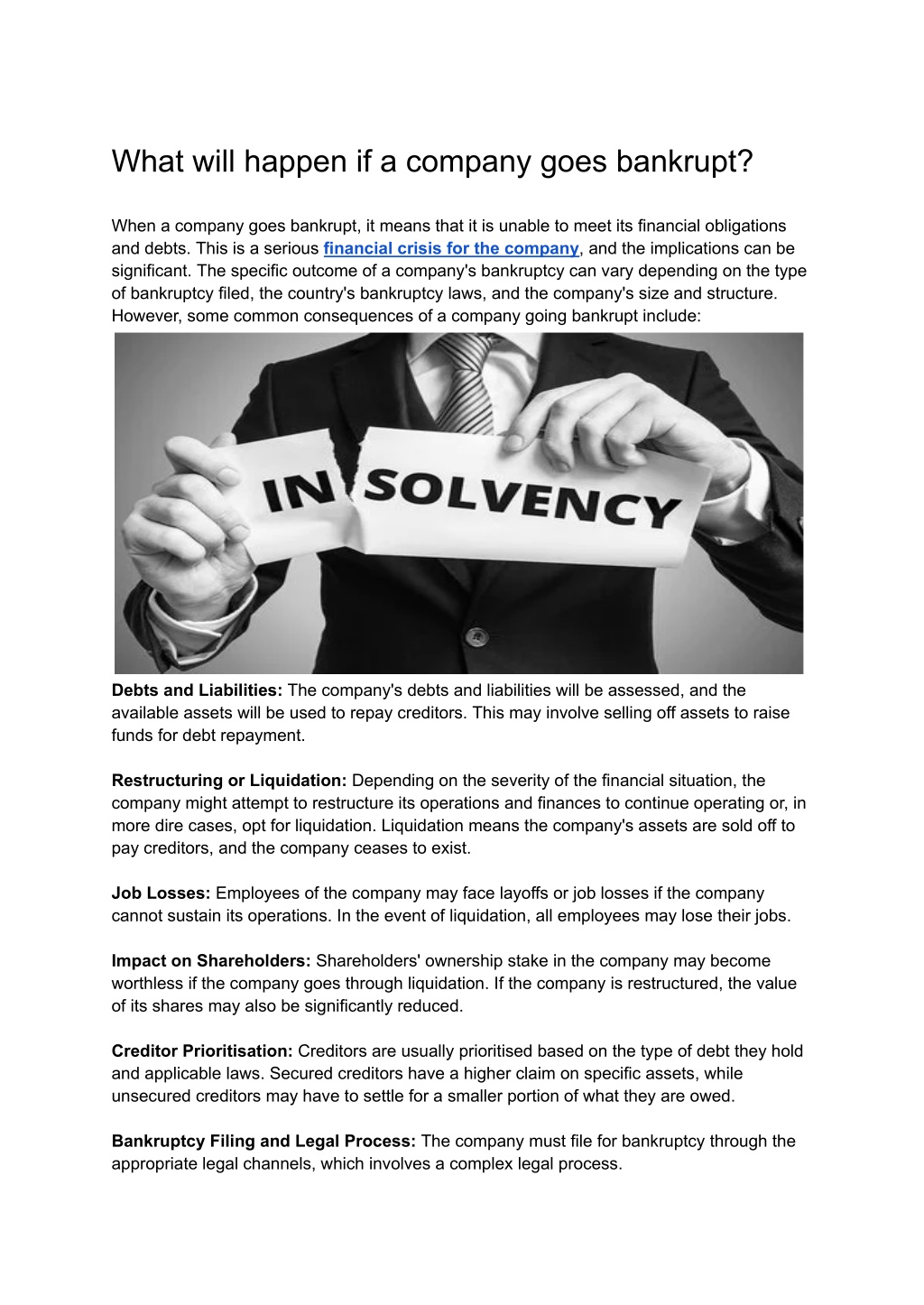Explained: Company Administration UK and What It Indicates for Organizations
Explained: Company Administration UK and What It Indicates for Organizations
Blog Article
Discovering the Effect of a Company Going Into Management
When a service enters administration, the effects waterfall past its prompt confines, sending surges via various rounds. As we browse via the complex landscape of a business facing management, a much deeper understanding of its effects emerges, shedding light on the intricacies that unfold when the destiny of a business hangs in the balance.
Immediate Effect On Operations
When an organization goes into management, the instant effect on its operations can be substantial, affecting numerous aspects of its working. One of the key consequences is the disturbance in day-to-day activities. With uncertainty bordering the future of the business, employees might experience distress, resulting in decreased efficiency and motivation. In addition, distributors and companions may end up being reluctant to involve with the service, impacting the supply chain and potentially creating delays or lacks in essential sources.
Financially, the business might face limitations on its spending and investment decisions, as managers take control to analyze the circumstance and establish the most effective strategy. This can cause capital challenges, making it challenging to meet obligations such as paying salaries or working out invoices without delay. Additionally, the track record of business might endure, as information of management spreads, potentially bring about a loss of customer count on and loyalty.
Financial Ramifications for Stakeholders
The instant functional challenges dealt with by a business going into management have substantial monetary ramifications for stakeholders involved in the company's affairs. Shareholders often birth the force of economic losses, experiencing a decline in the value of their investments as the business's supply rates plummet. Workers encounter unpredictabilities regarding their wages, advantages, and work protection, with possible layoffs or lowered payment packages impending. Distributors may run into payment delays and even non-payment for products or services given, affecting their capital and overall stability. In addition, creditors deal with the threat of getting only a fraction of the cash owed to them, bring about prospective losses and influencing their very own monetary wellness. On the other hand, customers might additionally be affected by a business going into management, encountering disruptions in solution, service warranty problems, or the loss of prepaid services or deposits. These financial implications highlight the causal sequence that a company entering management can carry different stakeholders, underscoring the relevance of positive risk management and calculated planning.
Legal Commitments and Obligations
When a company goes into management,Browsing the intricate internet of legal commitments and obligations is an essential venture for all parties included. The managers assigned to supervise the procedure have a responsibility to act in the most effective rate of interests of the creditors. They need to follow lawful needs, such as preparing records on the company's economic situation and performing meetings with financial institutions to go over the administration process.
Employees likewise have lawful civil liberties that need to be promoted throughout administration. Relying on the circumstances, they may be qualified to redundancy pay, notification pay, and other advantages. It is important for managers to follow employment legislations and guarantee that staff members are treated relatively throughout the process.
Creditors play a significant duty in management also. They can go to this site be notified regarding the company's financial standing, participate in lenders' meetings, and ballot on crucial choices. Administrators should connect transparently with creditors and stick to lawful methods to secure their interests.
Prospective for Company Restructuring
In the world of organization administration, discovering the potential for reorganizing holds significant promise for renewing a struggling business. When a service encounters financial distress or functional difficulties, reorganizing supplies a critical strategy to resolve underlying problems and position the business for future success. By reflecting on the business framework, operational procedures, and financial approaches, an organization can apply changes that enhance efficiency, minimize expenses, and boost total efficiency.

Additionally, reorganizing provides a chance to examine navigate to these guys leadership roles, responsibilities, and decision-making processes to ensure efficient administration and liability. By implementing a well-balanced restructuring strategy, a company can navigate challenging times and arise stronger and extra resistant in the competitive market landscape.

Implications for Sector and Market
Considering the wider effects for industry and market characteristics, it comes to be noticeable that a service undertaking restructuring can trigger causal sequences that reverberate throughout the affordable landscape. When a company enters into administration, it can cause boosted competition as other firms look for to fill up the void left by the battling company. This heightened competitors can result in rate battles, technology drives, or mergings find more and acquisitions as companies jostle for market share.
In addition, the collapse of an organization can additionally impact distributors and partners within the market. Suppliers might face settlement hold-ups and even defaults, affecting their very own monetary stability (what does it mean to go into administration). Collaborations that were reliant on the now-struggling service might require to be reevaluated or renegotiated, leading to additional disruptions on the market community
Final Thought
To conclude, the influence of a service going right into management is considerable, impacting operations, financial resources, legal responsibilities, and possibly leading to restructuring. Stakeholders have to navigate the challenges and unpredictabilities that emerge from this procedure, while the wider industry and market may likewise feel the effects. It is important for all celebrations involved to thoroughly consider their next steps and strategy for the future in order to minimize potential losses and make certain the very best end result for all involved.
When a service goes into administration, the prompt effect on its operations can be significant, influencing different elements of its working.The prompt functional challenges faced by an organization entering administration have considerable financial ramifications for stakeholders involved in the firm's affairs. These economic ramifications highlight the ripple effect that a business entering management can have on various stakeholders, emphasizing the value of aggressive risk monitoring and strategic preparation.
When a business goes into administration, it can lead to increased competition as various other firms look for to load the gap left by the battling service - company administration uk.In conclusion, the impact of an organization going right into management is substantial, influencing procedures, finances, lawful commitments, and possibly leading to restructuring
Report this page